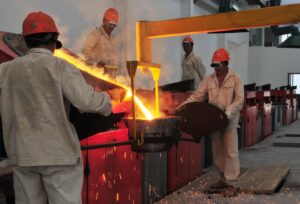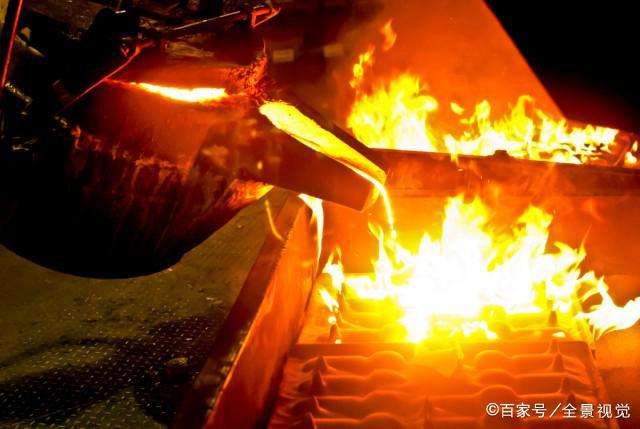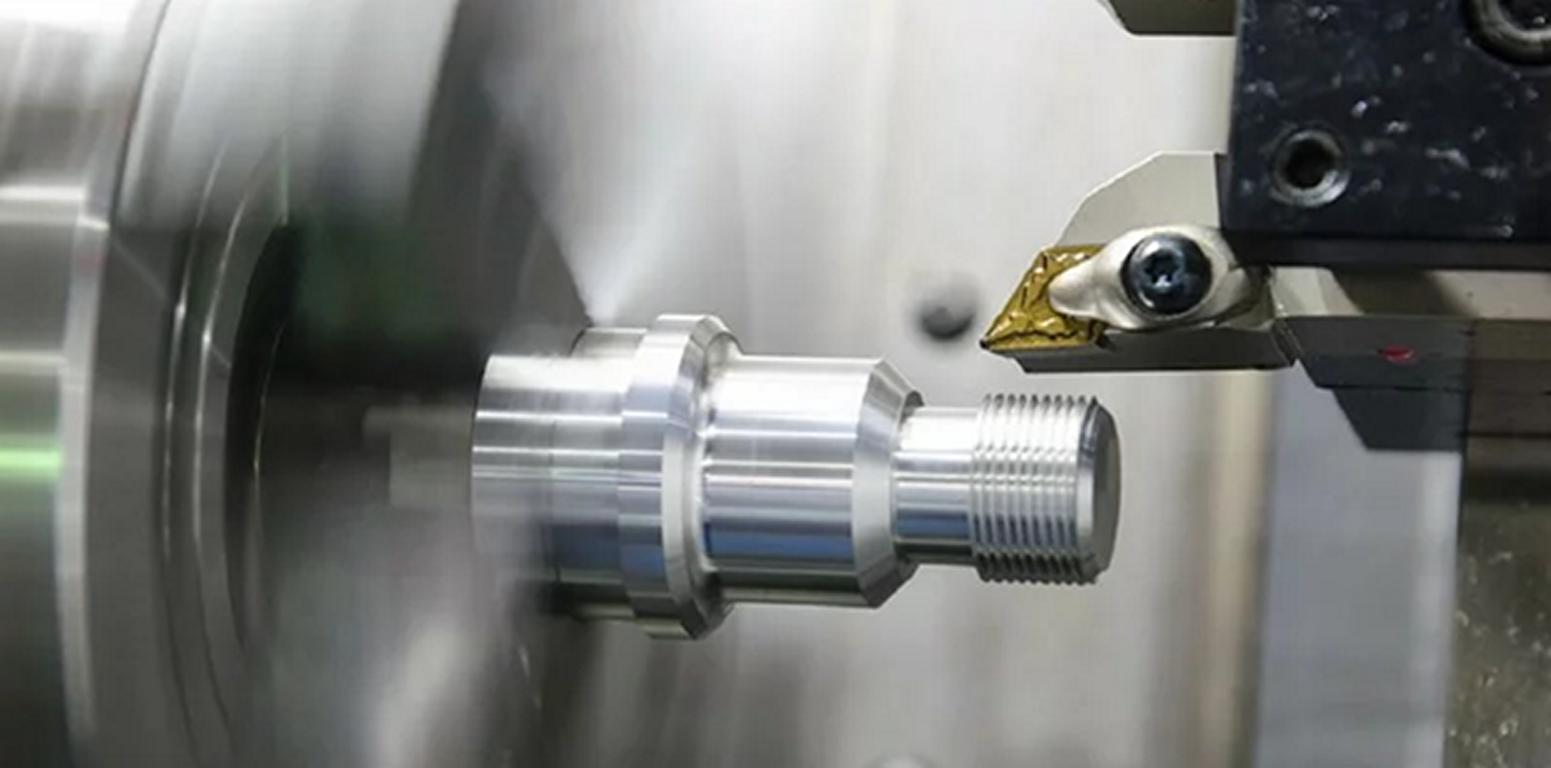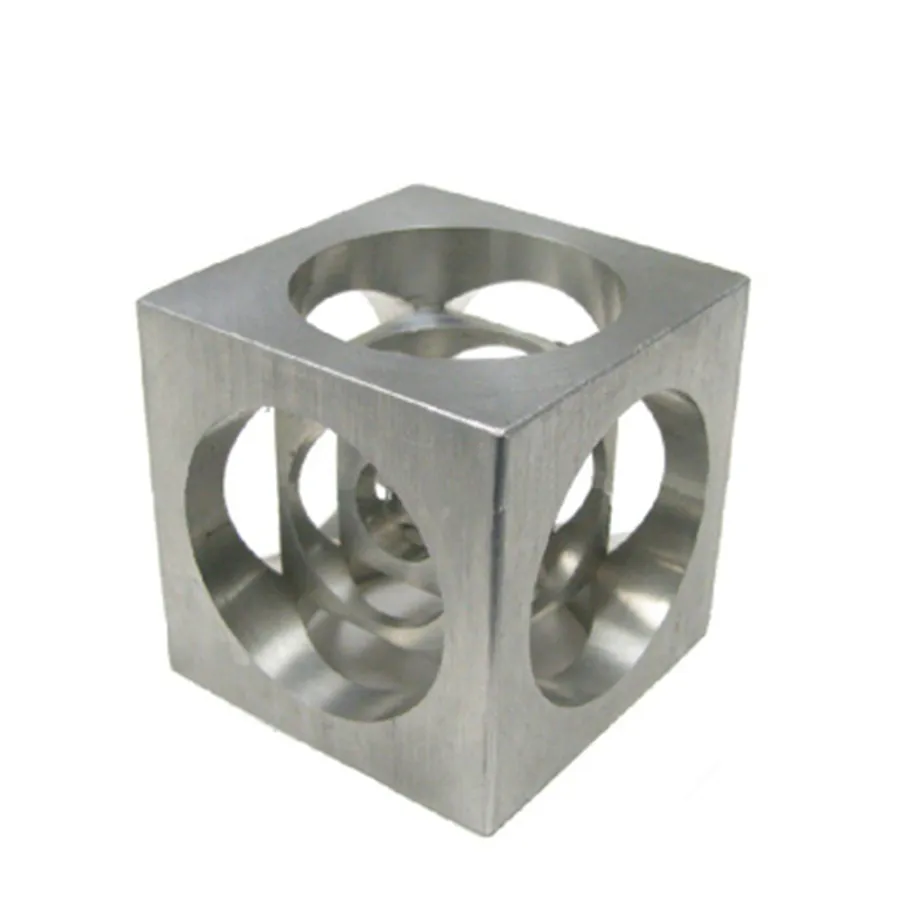
The melting point of a metal is the temperature at which it changes from a solid to a liquid state. This is a fundamental physical property determined by the strength of the metallic bonds between atoms. Stronger bonds require more energy (heat) to break, resulting in a higher melting point.
Melting points are crucial in metallurgy, manufacturing (e.g., casting, welding), and engineering design, especially for applications involving high temperatures like jet engines, nuclear reactors, and furnaces.
Classification by Melting Point
Metals are often categorized based on their melting points:
Low-Melting-Point Metals: Generally below 500°C (932°F).
Medium-Melting-Point Metals: Between 500°C and 1500°C (932°F – 2732°F).
High-Melting-Point / Refractory Metals: Above 1500°C (2732°F).
Melting Points of Common Metal Elements
Here is a table of pure metallic elements, sorted from highest to lowest melting point.
| Metal | Melting Point (°C) | Melting Point (°F) | Category & Notes |
| Tungsten (W) | 3,422°C | 6,192°F | Refractory Metal. The highest melting point of all metals. Used in lamp filaments, rocket nozzles. |
| Rhenium (Re) | 3,186°C | 5,767°F | Refractory Metal. Very rare and expensive. Used in high-temperature superalloys for jet engines. |
| Osmium (Os) | 3,033°C | 5,491°F | Refractory Metal. |
| Tantalum (Ta) | 2,996°C | 5,425°F | Refractory Metal. Highly corrosion-resistant. Used in surgical implants and capacitors. |
| Molybdenum (Mo) | 2,623°C | 4,753°F | Refractory Metal. Used in furnace components and as an alloying agent. |
| Niobium (Nb) | 2,477°C | 4,491°F | Refractory Metal. Used in superconducting magnets and jet engines. |
| Iridium (Ir) | 2,446°C | 4,435°F | Refractory Metal. Extremely dense and corrosion-resistant. |
| Chromium (Cr) | 1,907°C | 3,465°F | Transition Metal. Primarily used as a hardening agent in stainless steel. |
| Vanadium (V) | 1,910°C | 3,470°F | Transition Metal. An important alloying element for high-strength steel. |
| Titanium (Ti) | 1,668°C | 3,034°F | Transition Metal. High strength-to-weight ratio, corrosion-resistant. Used in aerospace. |
| Platinum (Pt) | 1,768°C | 3,214°F | Noble Metal. Used in catalytic converters, laboratory equipment, and jewelry. |
| Zirconium (Zr) | 1,855°C | 3,371°F | Transition Metal. Excellent nuclear properties, used in nuclear reactors. |
| Iron (Fe) | 1,538°C | 2,800°F | Ferrous Metal. The base element of steel. Critical for construction and machinery. |
| Cobalt (Co) | 1,495°C | 2,723°F | Transition Metal. Used in magnets and high-strength superalloys. |
| Nickel (Ni) | 1,455°C | 2,651°F | Transition Metal. Key component of stainless steel and superalloys. |
| Silicon (Si) | 1,414°C | 2,577°F | Metalloid. Crucial for semiconductors and as an alloying element in aluminum. |
| Copper (Cu) | 1,085°C | 1,984°F | Non-Ferrous Metal. Excellent conductor of electricity and heat. |
| Gold (Au) | 1,064°C | 1,947°F | Noble Metal. Malleable, ductile, and highly corrosion-resistant. |
| Silver (Ag) | 961.8°C | 1,763°F | Noble Metal. The best electrical and thermal conductor of all metals. |
| Aluminum (Al) | 660.3°C | 1,221°F | Non-Ferrous Metal. Lightweight, corrosion-resistant. Used in aerospace and packaging. |
| Magnesium (Mg) | 650°C | 1,202°F | Non-Ferrous Metal. Very lightweight; used in alloys for automotive and aerospace. |
| Zinc (Zn) | 419.5°C | 787°F | Non-Ferrous Metal. Used for galvanizing steel to prevent rust. |
| Lead (Pb) | 327.5°C | 621°F | Heavy Metal. Dense, soft, and toxic. Used in batteries and radiation shielding. |
| Tin (Sn) | 231.9°C | 449.4°F | Post-Transition Metal. Used as a coating for steel (tin cans) and in solder. |
| Bismuth (Bi) | 271.4°C | 520.5°F | Post-Transition Metal. Low toxicity; used in fusible alloys and pharmaceuticals. |
| Indium (In) | 156.6°C | 313.9°F | Post-Transition Metal. Used in transparent conductive coatings (LCDs). |
| Gallium (Ga) | 29.8°C | 85.6°F | Post-Transition Metal. Can melt in your hand. Used in semiconductors and LEDs. |
| Mercury (Hg) | -38.8°C | -37.9°F | Liquid Metal. The only metal that is liquid at standard room temperature. |




